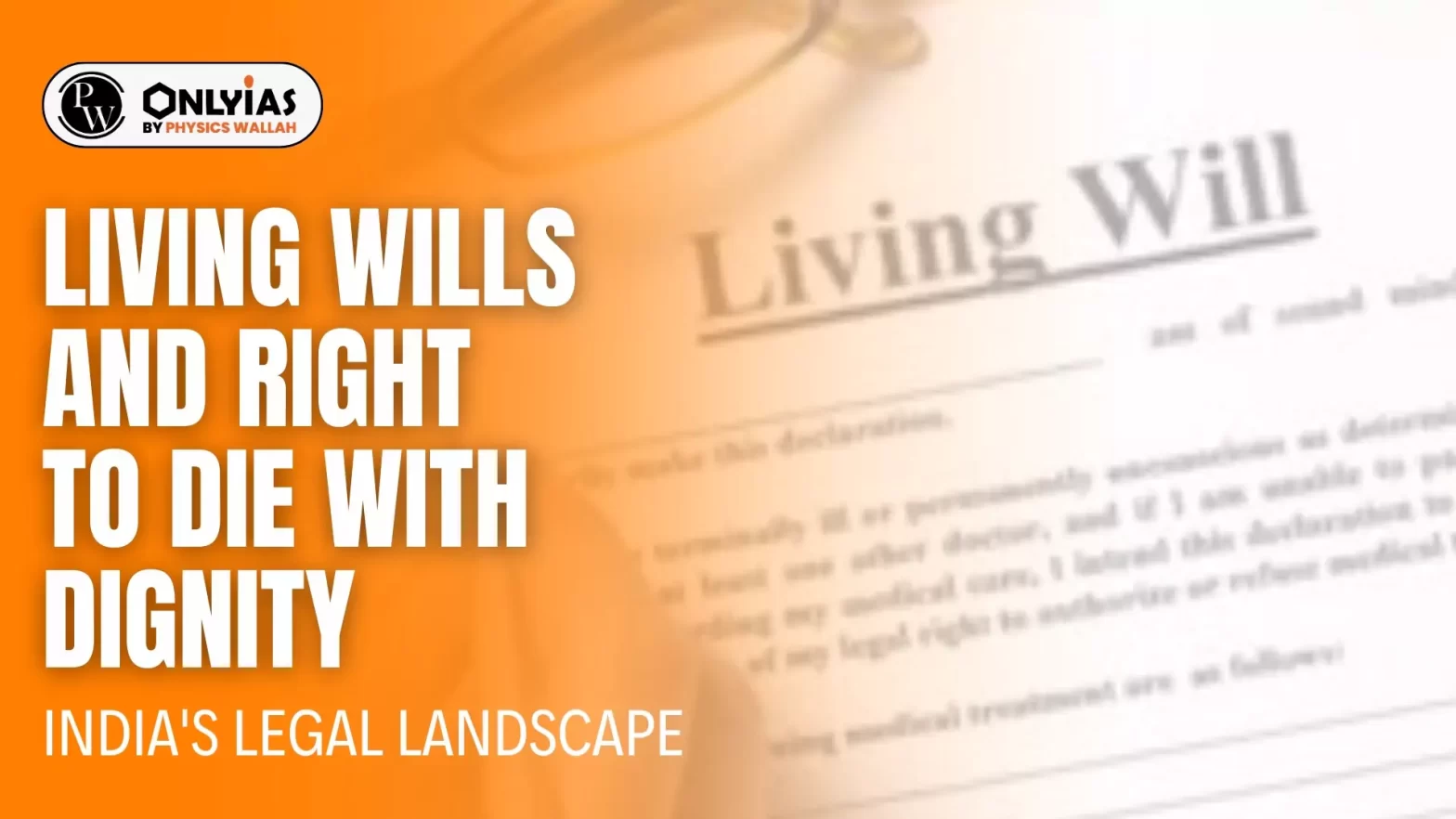Context
Recently, around thirty people in Thrissur in Kerala executed living wills.
Background of Living Wills in India
- Legality of Living Wills: Living wills, which have been legal since 2018, allow terminally ill people to withhold or withdraw treatment and die with dignity.
- Aim of the Living Will: It aims to empower patients to make decisions about their future medical treatment, especially when they are unable to communicate their wishes.
- Unavailability of Court Process: However, even after six years after the judgment, the Court’s process is unavailable in most of India.
- Unlikely Implementation: Officials remain unlikely to implement the procedure without direct orders and guidance from State governments.
The Supreme Court’s Judgement: 2018 Landmark Ruling
Types of Euthanasia
- Active euthanasia: It happens when medical personnel or another person purposefully causes the patient’s death.
- Passive euthanasia: It happens when a patient dies as a result of medical practitioners failing to do anything necessary to keep the patient alive or ceasing to do something that keeps the patient alive.
|
- Legalization of Passive Euthanasia: The Court legalized passive euthanasia allowing the natural process of death without prolonging life through artificial means and established guidelines for executing living wills.
The Court’s Procedure
- Complex Process: Initially, the Supreme Court’s process for living wills was complicated, impeding its implementation.
- Concerns Regarding the Process: Concerns included possible abuse by unscrupulous persons, as well as bureaucratic measures like needing judicial magistrate countersigning.
- Impairing of the Judgement: In January 2023, the Court acknowledged that having a judge to countersign each living will ‘impair, if not entirely defeat’ the goal of its judgment.
- Simplifying the Process: In 2023, the Court simplified the process by requiring living wills to be signed in front of witnesses and attested by a notary or gazetted officer.
- Appointing of Custodian: Designating a competent authority as custodian and obtaining authentication from treating doctors in the event of terminal illness became part of the simplified procedure.
With what challenges does India face in implementing living wills?
- Lack of Effectiveness: Most local governments have not selected custodians for living wills, which limits their usefulness.
- Lack of Protocols: The lack of rules for authenticating digital health records complicates the process even more.
- Certification Process: Guidelines require primary and secondary medical boards to certify decisions on treatment delaying or withdrawal.
- Ambiguity with Legal Provisions: The lack of clear legal definitions, such as ‘next of kin’, adds complexity, resulting in conflicts and legal difficulties.
- Reluctance by Officers: End-of-life care is sensitive and unfamiliar, therefore officials and state governments are hesitant to provide it.
- Failure of State and Local Governments: Despite the Supreme Court’s decision six years ago, governments have failed to take the essential steps towards implementation.
- Concerns of Doctors: Doctors’ fears about legal consequences that limits their ability to act in their patients’ best interests, emphasizing the importance of competent advice and consistent government intervention.
Way Forward
- Requirement of Clear Guidelines: Clear guidance and specific protocols from the central government are critical for bridging the competence gap and facilitating successful implementation.
- Haryana: Issued directions to civil surgeons across the State to follow the judgment but did not offer essential guidance or protocols on how to implement it.
- Odisha: State government has formed a committee of experts to consider detailed draft orders for implementing the judgment.
Conclusion
The failure to implement the right to die with dignity highlights the importance of proactive government initiatives. Effective guidelines, norms, and consistent action are required to reduce legal uncertainty and empower clinicians to honour their patients’ expressed preferences.
Also Read: Role Of Government In Health
![]() 4 Apr 2024
4 Apr 2024

